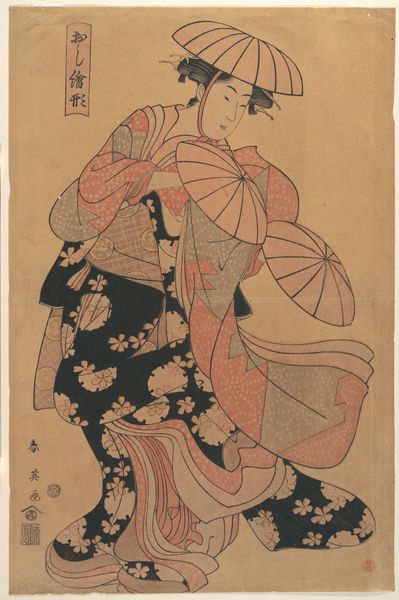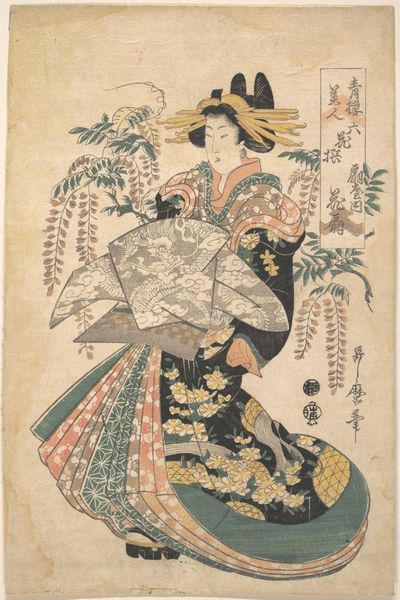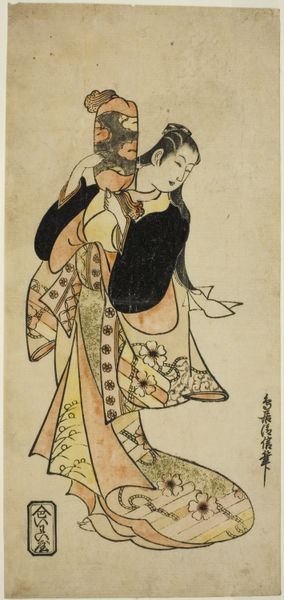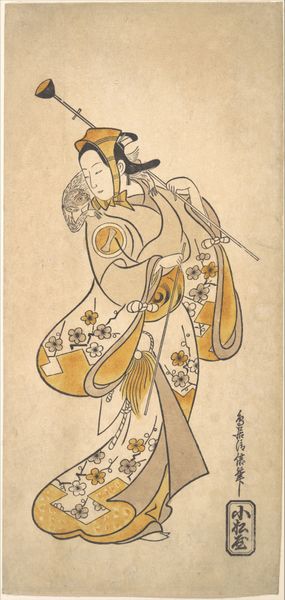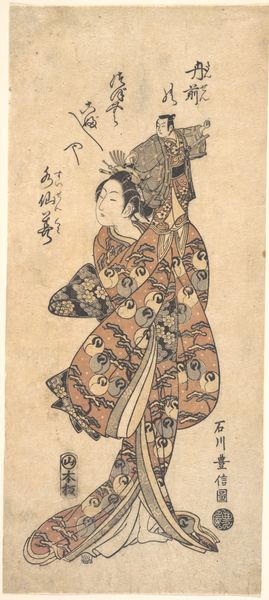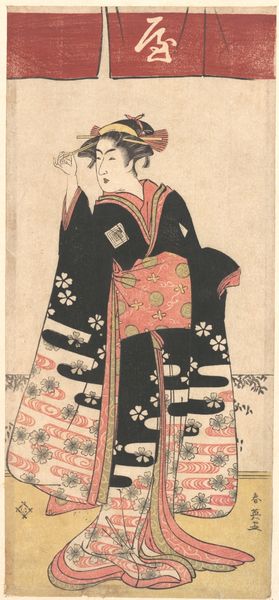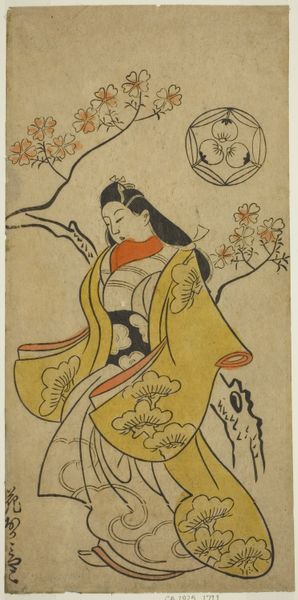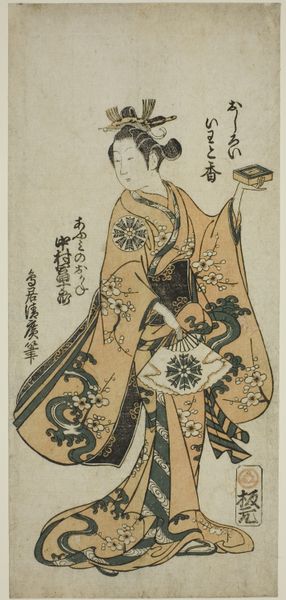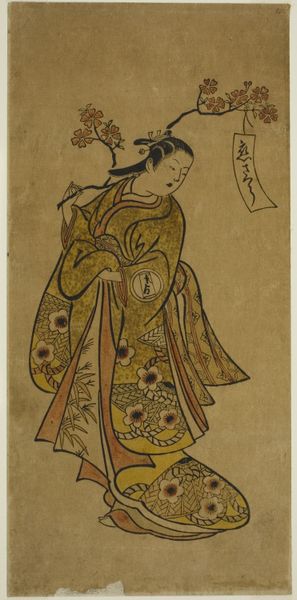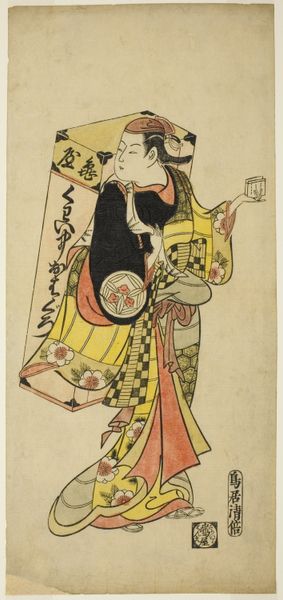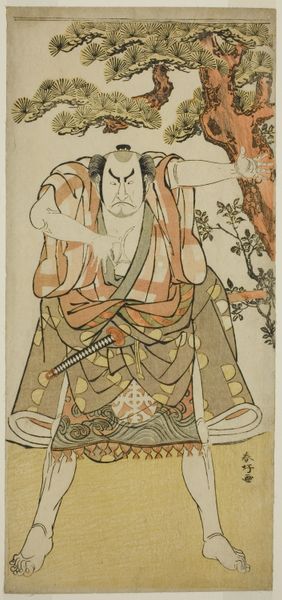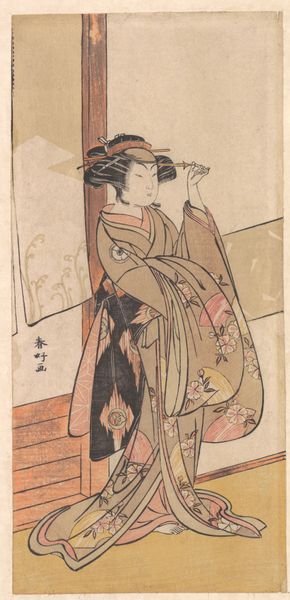
Actor Sawamura Kodenji as a Woman at the Time of the Tanabata Festival 1688 - 1708
0:00
0:00
print, woodblock-print
#
portrait
#
ink painting
# print
#
asian-art
#
ukiyo-e
#
figuration
#
woodblock-print
Dimensions: 23 1/4 x 12 1/2 in. (59.1 x 31.8 cm)
Copyright: Public Domain
Editor: So, here we have "Actor Sawamura Kodenji as a Woman at the Time of the Tanabata Festival," a woodblock print by Torii Kiyonobu I, dating sometime between 1688 and 1708. The patterns on the kimono are incredible – so intricate. What can you tell me about the material context of prints like this? Curator: The process itself is critical. Ukiyo-e prints, like this one, were collaborative ventures. Consider the labor: the artist designed the image, but skilled artisans carved the woodblocks and meticulously applied the colours. The final print embodies not just artistic vision, but also the labor and skill of often-unrecognized craftspeople. Does thinking about it this way change how you see it? Editor: Absolutely! It shifts the focus from solely the artist's individual genius to a collective effort, almost like early examples of mass production in a way. The commercial aspect seems important. Were these prints expensive? Curator: Precisely. Ukiyo-e flourished as a commodity. They were relatively affordable, catering to a growing merchant class with disposable income eager for depictions of fashionable actors, courtesans, and popular tales. The consumption of these prints was a social activity. Did the accessibility change perceptions of Art at the time? Editor: That makes sense. I imagine that made art available to more people in society. It certainly challenges the idea of art being exclusively for the wealthy or aristocratic classes. Curator: Indeed. By focusing on the materials, labor, and consumption of ukiyo-e prints, we uncover a complex web of social and economic relationships. This shifts the narrative away from simply aesthetic appreciation and encourages an understanding of the print as a product deeply embedded in its time. Editor: It really puts the artwork into perspective. I hadn't considered the full collaborative and commercial dimensions before. Curator: That's why materialist approaches can be useful. Looking closely at an object’s origins tells a deeper cultural story.
Comments
No comments
Be the first to comment and join the conversation on the ultimate creative platform.
